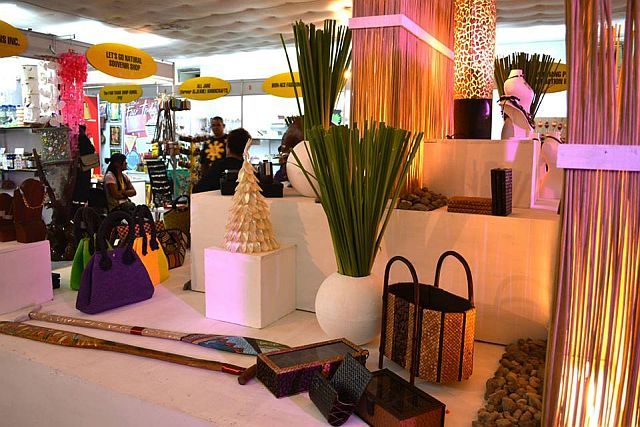
Sales of non-electronics exports are slowly gaining ground in the sector.
DTI FB photo
Export growth expected to continue until December
Following the positive performance of the country’s export sector in the first seven months of 2017, industry stakeholders are positive the trend will continue up until the end of the year.
Federico Escalona, executive director of the Philippine Exporters Confederation Inc. (Philexport) in Cebu, said the weak peso against the US dollar will be crucial in further driving the exports rebound since it will make the sector more competitive.
“If you compare it to 2016, last year was not very good. Export figures declined for 18 months straight beginning in 2015. So if you compare where we are now with where we were before, we can really see an increase,” he told reporters on the sidelines of a Department of Trade and Industry (DTI) public consultation in Cebu City last week.
According to latest figures released by the Philippine Statistics Authority (PSA), total export sales for January to July 2017 were valued at $36.57 billion, reflecting an increase of 13.9 percent compared to $32.12 billion during the same period of the previous year.
Escalona attributed the sluggish Philippine exports in recent months to the weak global market, which he said is now slowly recovering.
“Philippine export growth now isn’t like before, reaching 30 percent or higher. But now, cautiously, it is climbing up,” he said.
Electronic products continued to be the country’s top export commodity with total receipts amounting to $2.76 billion and accounting for a 52.3-percent share of the total exports revenue in July 2017.
Aside from electronics, other manufactures, machinery and transport equipment, woodcrafts and transport equipment, ignition wiring set and other wrings used in vehicles, aircrafts and ships were also top export earners during the period covered.
Among the countries top export market destinations for July 2017 were Japan, US, Hong Kong, China and Singapore.
Conflict threat
Escalona said that while his outlook on exports for the rest of the year is positive, he is still worried about lingering conflict in the Korean peninsula, which he said could “lead to some kind of war” if not solved immediately.
The Asia Pacific trade route, where the Philippines is part of, facilitates the movement of “more than trillions of dollars” worth of goods from one country to another.
“If that is disrupted, it will be dangerous for us. But I think we’ve recovered from the collapse of the financial market in 2007 to 2008. Probably now, we will be able to sustain this growth,” said Escalona.
Escalona earlier said the export sector could expect sales to pick up in the coming months as Philippine export products became more competitive due to the weak peso.
Innovation
With this in mind, he said the sector will try to expand its share in existing markets as well as develop new products through innovation.
Asked about what these innovations are, Escalona said these may be incremental or radical.
“It can be product innovation or process innovation or, in blue ocean terms, value innovation for buyers’ satisfaction or delight,” he added.
50-50% share
In a separate interview, DTI Central Visayas Director Asteria Caberte said she was happy to note that the share of non-electronic products in total export sales increased.
“Electronics used to get a 60 percent share or more, but now it is around 50-50 for electronics and non-electronics,” she said.
Non-electronic items include other manufactures, woodcrafts and furniture, and coconut oil, among others.
Caberte pointed out that these are the core competencies of Central Visayas, implying that the region has become even more diversified in its export offerings.
The trade official said there should be a continuous concerted effort to put in place an enabling environment for business, especially for exporters.
“We have to look at cost points, in terms of competitiveness and in terms of costs, as well as proper infrastructure for them,” she added.